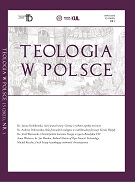W ramach współczesnej chrystologii, która powróciła do tradycji patrystycznej, a zwłaszcza do teologii św. Maksyma Wyznawcy, na nowo podkreśla się, że posłuszeństwo stanowi najwyższe wyrażenie życia i posłania Jezusa Chrystusa. W posłuszeństwie urzeczywistnia się osobowe utożsamienie bytu i misji Jezusa, wyrażające Jego relację do Boga Ojca i określające Jego wyjątkowość. Na tym gruncie można w sposób pogłębiony dokonywać interpretacji Jego dzieła na rzecz człowieka wykraczającego poza wszelkie redukcje immanentne. Takie ujęcie staje się potem punktem wyjścia do właściwego rozumienia i interpretowania dokonanego przez Niego dzieła zbawienia, a tym samym zawartego nowego przymierza. W niniejszym artykule zostaje ukazane posłuszeństwo Chrystusa w relacji do tajemnicy i dziejów przymierza, które stanowi niejako wstęp do właściwego ukazania formy i treści tego posłuszeństwa, a tym samym skonkretyzowania jego znaczenia soteriologicznego.
SUMMARY
Within the frames of contemporary Christology, which has returned to patristic tradition, it is once again emphasised that the obedience constitutes the highest manifestation of life and message of Jesus Christ. It is in obedience where personal identification of the being and mission of Jesus, expressing His relation with God the Father and defining His exceptionality, finds its realisation. This perspective allows a profound interpretation of Jesus’s work for the benefit of man, which goes beyond all immanent reductions. This view becomes also a starting point for the appropriate understanding and interpretation of the act of salvation and by the same token of the new covenant with God. This article presents the obedience of Christ in relation to the mystery and history of the covenant which constitutes, to some extent, an introduction to the correct representation of the form and content of this obedience and simultaneously to determination of its soteriological meaning.
Ostatnia aktualizacja: 25.07.2022, godz. 14:05 - Marcin Walczak































